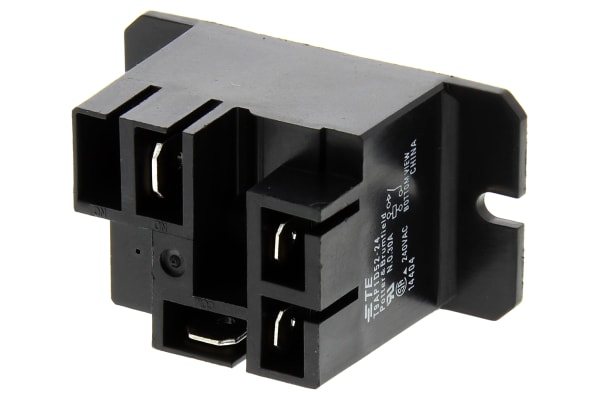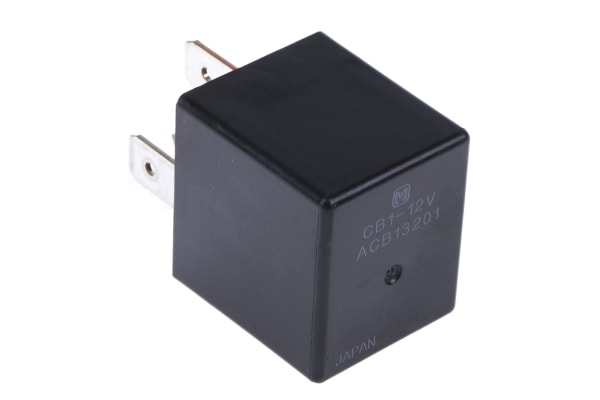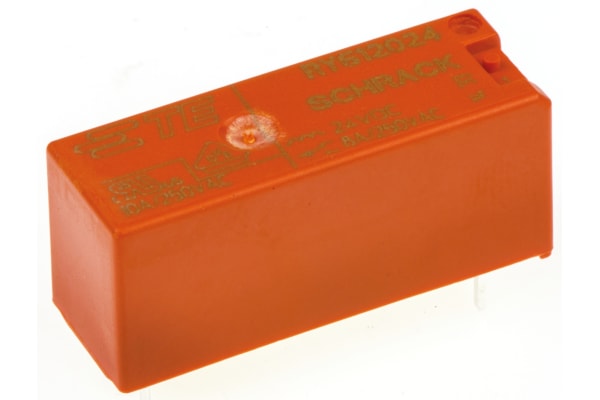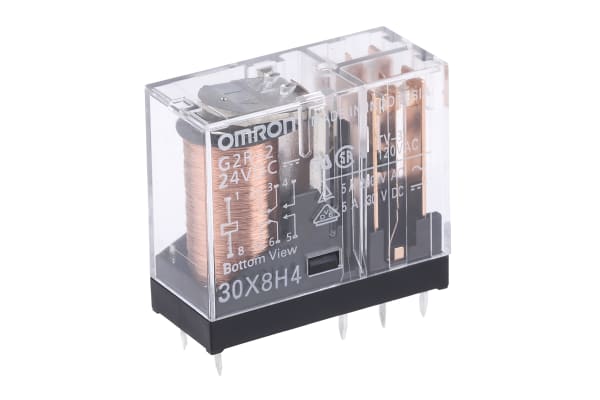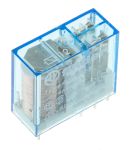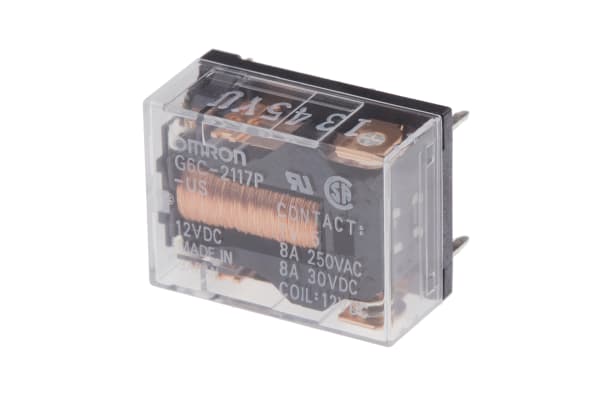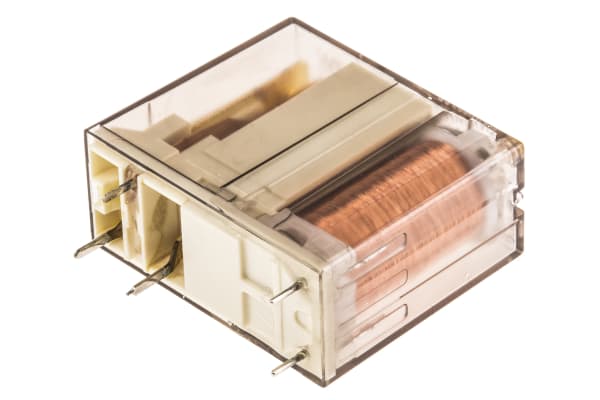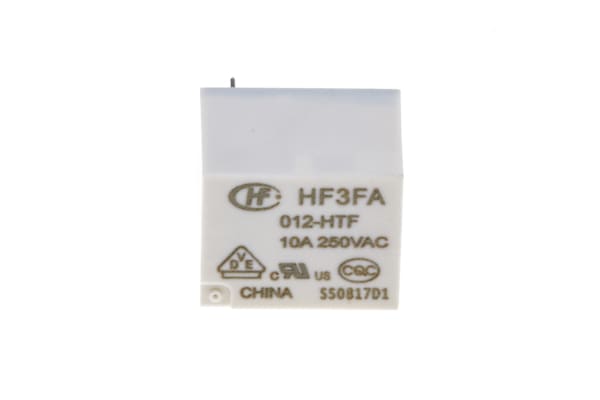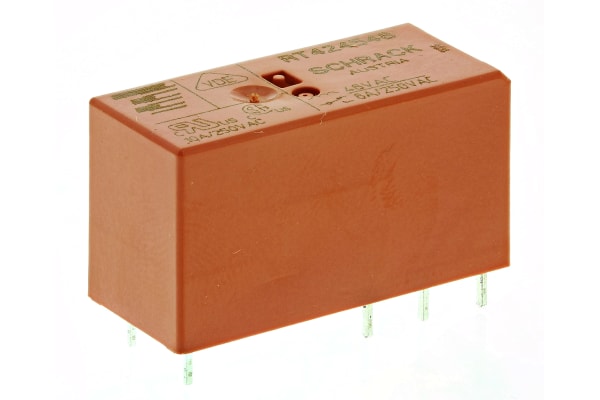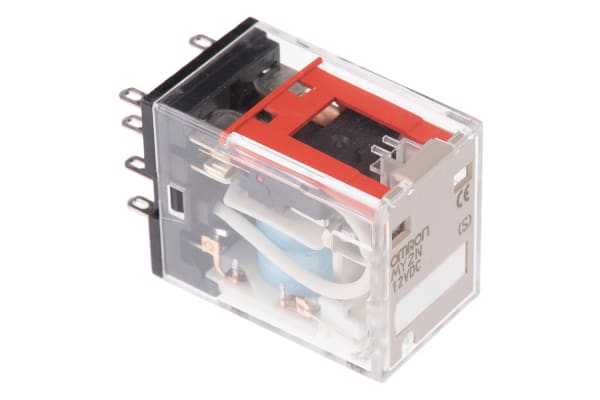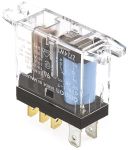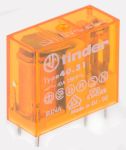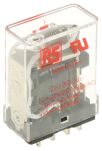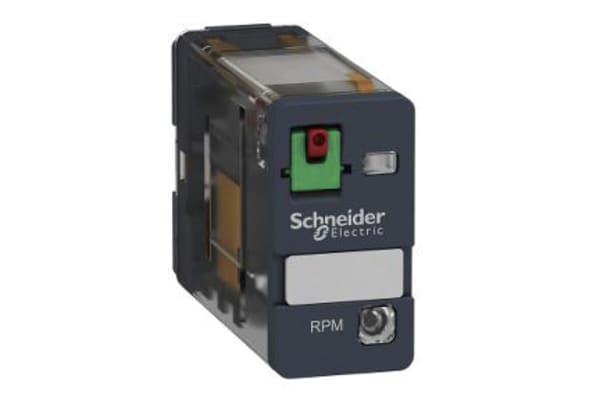Non-Latching Relays
Relays are electrical switches that are operated by electrical impulses with the primary function to open and close a circuit, they can also be referred to as industrial switches. There are 2 main types available, latching and non–latching relays.How do non-latching relays work?Non-latching relays are in a normally closed (NC) position and will stay in this state without power. When power passes through the circuit, the relay switched to a normally open (NO) position by using an internal coil to generate a magnetic force, holding this NO position. Once the current is turned off, it returns to the NC position. This makes non-latching relays well suited to push-button applications like keyboards and micro-controller input buttons.What are non-latching relays used for?Non-latching relays are highly durable and versatile components, making their performance long lasting and suitable for use in a wide range of applications, such as:Automotive enginesHousehold appliancesIndustrial machineryMedical equipmentTelecommunications equipmentWhat is the difference between latching and non-latching relays?Both types of relays in similar in design and function, however, a significant difference between them is that a latching relay will remain in the last position it when it was last powered, whereas a non-latching goes back to its normal position. This makes each more type of relay suitable for different applications. Considerations when selecting a relayWhen choosing a relay, it is important to consider a number of specifications to ensure it is fit for purpose, some factors include:Coil voltage – the required voltage to actuate the switching mechanism. If a voltage is too high this could damage the components, if it is too low then it will not actuate. Contact configuration – This is the state the contacts are in without power. For example SPST, single pole single throw.Contact material – the relay contacts are available in many materials that have certain properties. Common materials are gold, silver, tin oxide and nickel Coil power – the amount of power (watts) the coil operates at. This must match the power in the circuit for correct function. Coil resistance – the amount of resistance (ohms) in the circuit that the coil creates.
-
TE Connectivity, 24V dc Coil Non-Latching Relay SPNO, 30A Switching Current Flange Mount Single Pole, T9AP1D52-24
IDR104,575.33 -
Finder, 12V dc Coil Non-Latching Relay SPDT, 10A Switching Current PCB Mount Single Pole, 40.31.7.012.0000
IDR66,185.59 -
TE Connectivity, 5V dc Coil Non-Latching Relay SPNO, 16A Switching Current PCB Mount Single Pole, 1-1415898-8
IDR98,596.60 -
Panasonic, 12V dc Coil Automotive Relay SPDT, 40A Switching Current Plug In Single Pole, CB112
IDR142,545.51 -
RS PRO, 24V dc Coil Non-Latching Relay SPDT, 10A Switching Current PCB Mount Single Pole
IDR103,631.32 -
TE Connectivity, 24V dc Coil Non-Latching Relay SPDT, 8A Switching Current PCB Mount Single Pole, RY612024
IDR97,652.59 -
Omron, 24V dc Coil Non-Latching Relay DPDT, 5A Switching Current PCB Mount, 2 Pole, G2R-2 24DC
IDR106,358.46 -
Finder, 12V dc Coil Non-Latching Relay DPDT, 8A Switching Current PCB Mount, 2 Pole, 40.52.7.012.0000
IDR94,610.78 -
Omron, 12V dc Coil Non-Latching Relay SPST, 8A Switching Current PCB Mount Single Pole, G6C-2114P-US-DC12
IDR97,337.92 -
Omron, 12V dc Coil Non-Latching Relay SPDT, 8A Switching Current PCB Mount Single Pole, G6C2117PUS12DC
IDR97,128.14 -
TE Connectivity, 12V dc Coil Non-Latching Relay SPDT, 12A Switching Current PCB Mount Single Pole, RP412012
IDR153,768.74 -
Hongfa Europe GMBH, 12V dc Coil Non-Latching Relay SPNO, 15A Switching Current PCB Mount Single Pole, HF3FA/012-HTF
IDR101,638.41Pack (1 Pack of 5) -
TE Connectivity, 48V ac Coil Non-Latching Relay DPDT, 8A Switching Current PCB Mount, 2 Pole, RT424548
IDR94,610.78 -
RS PRO, 12V dc Coil Non-Latching Relay SPDT, 10A Switching Current PCB Mount Single Pole
IDR100,274.84 -
Omron, 24V dc Coil Non-Latching Relay SPDT, 16A Switching Current PCB Mount Single Pole, G2R-1-E 24DC
IDR87,583.15 -
Omron, 12V dc Coil Non-Latching Relay DPDT, 10A Switching Current Plug In, 2 Pole, MY2N 12DC(S)
IDR205,374.62 -
Omron, 12V ac Coil Non-Latching Relay 4PDT, 5A Switching Current Plug In, 4 Pole, MY4 12AC(S)
IDR109,295.38 -
Omron, 5V dc Coil Non-Latching Relay SPDT, 10A Switching Current Panel Mount Single Pole, G2R1T5DC
IDR103,001.98 -
Omron, 12V dc Coil Non-Latching Relay SPDT, 3A Switching Current PCB Mount Single Pole, G6E-134P-US 12DC
IDR116,008.34 -
Finder, 110V ac Coil Non-Latching Relay SPDT, 10A Switching Current PCB Mount Single Pole, 40.31.8.110.0000
IDR150,936.71 -
RS PRO, 24V dc Coil Non-Latching Relay SPDT, 15A Switching Current PCB Mount Single Pole
IDR105,519.34 -
-22.50%
Schneider Electric, 230V ac Coil Non-Latching Relay SPDT, 15 A @ 250 V ac, 15 A @ 28 V dc Switching Current Single
IDR137,091.23IDR113,910.54 -
Finder, 24V dc Coil Non-Latching Relay DPDT, 8A Switching Current PCB Mount, 2 Pole, 40.52.7.024.0000
IDR104,890.00 -
Omron, 24V dc Coil Non-Latching Relay SPNO, 5A Switching Current PCB Mount Single Pole, G6B-1114P-US-SV 24DC
IDR129,224.48



